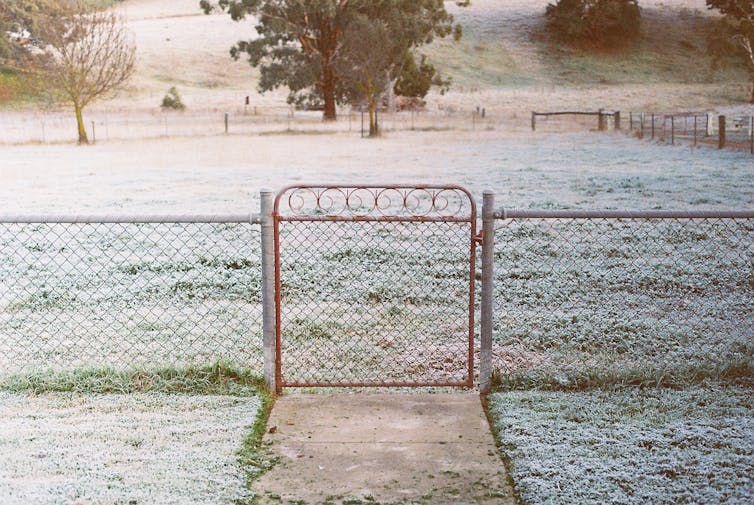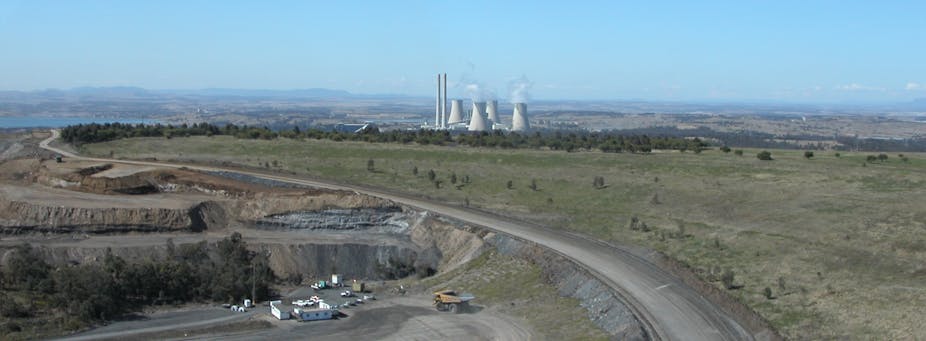The built and natural environments are now changing so rapidly that our language and conceptual frameworks have to work overtime just to keep up. Under the intertwined impacts of global development, rising population and global warming, with their accompanying changes in climate and ecosystems, there is now a mismatch between our lived experience of the world, and our ability to conceptualise and comprehend it.
No longer is the “wisdom of the elders” relevant to how we should live in the here and now, and this loss of historically informed knowledge has implications for social cohesion.
I experienced the connections between mental health and changes to a once predictable and loved home-environment when examining the impact of open-cut coal mining in the Upper Hunter region of NSW. My own eco-biography, the seminal influences in my life that have influenced my feelings about the natural environment, had attuned me to the importance of a positive “sense of place” in people’s lives, and to the significance of what the geographer Yi-Fu Tuan called “topophilia”, or the love of place and landscape.
From the 1980s onwards, under the combined impacts of coal mines, power station pollution, and persistent drought, the people of the Upper Hunter were suffering from a form of chronic distress that seemed to me to be the opposite of topophilia. Their relationship to their home environment had turned bad.
By the late 1990s the extent of open-cut coal mining in the Upper Hunter was in excess of 500 square kilometres and had changed the landscape in ways that older traditions of underground mining did not. Moreover, the length and severity of drought in eastern Australia was now arguably tied to climate change, driving natural variability into more extreme regimes.
It was this thought that inspired me in 2003 to create a new concept for the English language, one that captured this feeling of chronic distress caused by negatively perceived changes to a home and its landscape. I realised that there was no concept in the English language that adequately described the distressed state of the Upper Hunter residents. The melancholia of nostalgia (nostos – to return home) was close, but had the obvious disadvantage that these people were still living in the place they called home, so were not “homesick” in the traditional nostalgic sense.
As a result of my own background and the testimony of citizens in the Hunter region, I defined “solastalgia” as an emplaced or existential melancholia experienced with the negative transformation (desolation) of a loved home environment.
Solastalgia has its origins in the concepts of “solace” and “desolation”. Solace has meanings connected to the alleviation of distress or to the provision of comfort or consolation in the face of distressing events. Desolation has meanings connected to abandonment and loneliness. The suffix -algia has connotations of pain or suffering. Hence, solastalgia is a form of “homesickness” like that experienced with traditionally defined nostalgia, except that the victim has not left their home or home environment.
Solastalgia, simply put, is “the homesickness you have when you are still at home”.

The concept of solastalgia has had considerable international impact since its creation and has helped revive interest in the relationships between humans and place at all scales. An internet search on the term will produce many thousands of results in many languages and a brief scan of those results reveals that, apart from new applications in academic contexts, artists, composers, musicians, poets, playwrights and hundreds of ordinary people in blogs and websites have understood the need for the term and have used it in meaningful ways.
One of the reasons for international interest in the concept of solastalgia is that we are in the middle of a pandemic of earth-related distress that will only get worse. Everything that was once familiar and trusted in our environment will be experienced as the “new abnormal” as development and climate pressures continue to build.
Worldwide, many are beginning to feel this unease. Richard Louv, in his book The Nature Principle, discusses solastalgia as an emergent theme in people’s lives, and the reactions to climate change of female Elders living in the Torres Strait can now be understood as a solastalgic response tied to a loss of their sense of place.
Solastalgia gives expression to those gut feelings by creating a whole new psychoterratic (psyche – earth) typology to describe what sensitive people already feel but could not express in language.
The challenge of recognising and responding to the experience of solastalgia is greater than ever. Unfortunately, small scale, local damage is still happening to loved home environments as globalisation homogenises urban and rural landscapes. Regional solastalgia is produced under the impact of gas fracking, mining, and agribusiness, as they bring unwelcome damage and pollution on a huge scale to ecocultural and bioregional landscapes.
However, as bad as local and regional negative transformation is, it is the big picture, the Whole Earth, which is now a home under assault. A feeling of global dread asserts itself as the planet heats and our climate gets more hostile and unpredictable.
With a new psychoterratic language to describe and “re-place” our emotions and feelings, powerful transformative forces are unleashed. Solastalgia is fixated on the melancholic, but it is also a foundation for action that will negate it. There is a positive side to psychoterratic classifications, one where positive earth emotions and feelings such as biophilia, topophilia, ecophilia, soliphilia and eutierria can be used to counter the negative and destructive.
There is a drama going on in our heads and hearts, where solastalgia can be defeated by the simultaneous restoration and rehabilitation of mental, cultural, and biophysical landscapes.
Now that solastalgia and other psychoterratic terms (both positive and negative) are being established in the research literature and many forms of popular culture, and as recognition of the damage that degraded and desolated environments do to our mental health increases, it is possible that we can respond more effectively to simultaneously restore mental and ecosystem health.
Either we face a pandemic of solastalgia and related negative psychoterratic syndromes as a result of the havoc created by unsustainable development and climate change, or we use our intelligence and creativity to give rise to a world where our positive psychoterratic emotions can thrive.
Comments welcome below.

